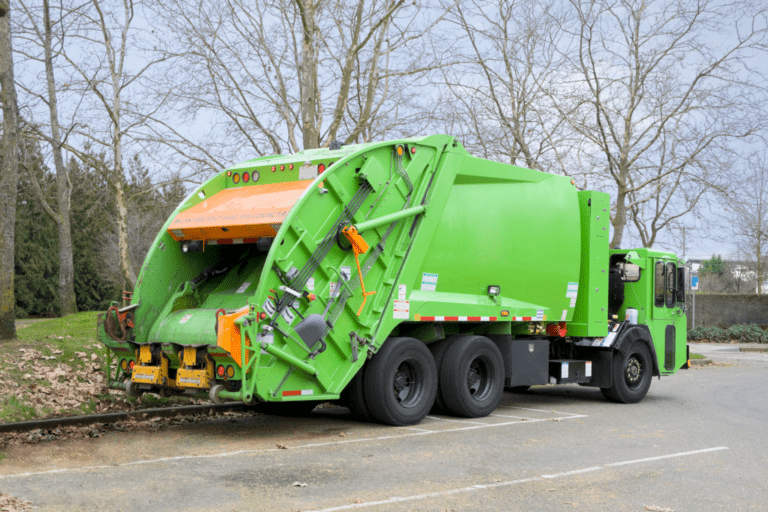How many times have you wished you could streamline the way in which you manage your fleet? With everything that goes into it, we know that the task brings more than its share of headaches and obligations. Take, for instance, the driver vehicle inspection reports (DVIR) your company needs to file before and after every single trip.
While the necessity of DVIR is unquestioned (we’ll get into that shortly), you might still find yourself craving an easier approach, one that eliminates much of the pain that goes into completing, filing and overseeing these reports. You might even dream of some way you can retain more of your organization’s precious resources. Well, may we humbly introduce you to the magic of eDVIR.
An electronic alternative to DVIR, eDVIR offers an opportunity to sharpen the accuracy of your report checklist, streamline your processes and save tons of time while doing so. In fact, this emerging tool is quickly gaining popularity throughout the industry, giving way to a long-overdue revolution of the outdated paper-based system.
While it is not our intention to directly pit paper-based DVIR against eDVIR (after all, the choice is ultimately yours), it is critical for the long-term success of your company that you stay abreast of all the latest trends that might offer a better way to boost productivity and outfox your competition. eDVIR could be just the solution you’re looking for, and since DVIR is an unavoidable challenge, you might as well find a simpler methodology for achieving that goal.
Why We Need DVIR

With a job as busy as yours, you are probably always looking for ways to keep things moving along at a faster pace. How can you accomplish the same amount of work in a shorter period of time, and by the way, when will you finally catch up with that lengthy to-do list you’ve been wanting to finish? Well, we’re sorry to say that cutting DVIR out of your business simply isn’t an option. Here’s why — regardless if you use paper-based DVIR or eDVIR — this is such a critical part of your business.
-
Required by law: The first and most obvious reason for DVIR is that it is mandatory under federal law. As required by the Federal Motor Carrier Safety Administration, each driver must verify the condition of each vehicles during a pre-trip inspection. If the vehicle isn’t in proper working order, then repairs must be conducted before hitting the road. Companies like yours need to fill out some kind of form and have it on record, though the details of this document may vary. If this law is not observed, you could be facing fines or even license revocations.
-
Protect your drivers and others: In addition to the legal reasons, DVIR places an emphasis on the safety of both your drivers as well as others on the road with them. Vehicle collisions are among the most common causes of death, and if simply filling out a form can present a check to ensure that all vehicles are safe before each trip, that’s a small price to pay to possibly prevent a deadly incident. After all, even a minor issue like a faulty signal could lead to disaster. Don’t let your vehicle maintenance take a backseat when it could wind up saving lives.
-
Find growth opportunities: There’s always an upside to keeping copious records. In this case, having a report for every trip and every vehicle could open your eyes to some significant improvements that you can make to your business. If a particular part, for example, continually fails, then it might be high time that you reevaluated either the mechanic you use or the part in question. Sure, your vehicles might need some work now and again, but consistent problems will reveal a larger issue. You’re bound to save time and money if you keep close watch on these details and maximize the performance of your vehicles.
-
Safeguard your company’s future: You’re already looking out for your drivers when you make DVIR a priority, but you’re also keeping your company’s best interests in mind as well. If you’re ever audited, you’ll have an extensive archive of reports to refer back to. This will provide legal evidence of your commitment to safety, if an incident does ever occur out in the field. Moreover, your reputation and good standing may depend on your compliance with regulations. When DVIR is a key component of how you do business, you are ensuring that your business’s long-term success is protected.
Understanding the Differences

Paper-based DVIR may have worked well for you in the past, but for the sake of your business, it’s important that you acquaint yourself with eDVIR and all that it can bring.
We created this handy infographic to highlight the differences between the two approaches. But let’s compare them in a bit more detail now so that you can make an informed decision about how you want to proceed.
It’s Inspection Time
All right, it’s time for your driver to conduct a pre-trip inspection. Here’s how the process would go with traditional paper-based DVIR. Armed with just a pen, the driver would fill out the paper form, starting with basic details like name, time, date, carrier name and location.
Then, they would simply run through the checklist as they evaluate each item throughout the vehicle.
-
Are the lights working?
-
Do the tires have enough tread and air?
-
And so on.
Standard paper-based forms list the parts to be inspected in alphabetical order, which can often lead the driver to do multiple laps around the vehicle as they check everything. The job gets done, but the amount of time to do so can be excessive, to say the least.
On the other hand, eDVIR eliminates the complexity of filling out an inspection report and boils it down to its purest form. To get started, the driver opens the eDVIR mobile app on their smartphone or tablet. From there, they can select the appropriate inspection form — they’re fully customizable, by the way — and begin filling it out.
Because you can create your own forms, you can design it to fit in with whatever layouts are easiest for your team. Want to format it to serve a one-time walk-through of a given vehicle? Go for it, and be amazed at the amount of time you’ll save with this new system.
Finding the Faults
So now that the form is completed, you might think that the two processes would converge into one and the same again. But you’d be wrong. Once a paper-based DVIR is completed, the next step is to identify the action items that need to be repaired and/or replaced.
If there are none, the DVIR is simply complete and, once the driver is able to return to the office, submitted for filing. If there is a fault that needs to be addressed, the driver then reaches out to a mechanic who reviews the report, makes the fix and adds in the steps he or she took to address the problem. Only then is the report submitted to the carrier.
For eDVIR, the process is far more instantaneous. As the driver evaluates the vehicle, they can include documentation such as photos, voice recordings and the like to support their findings. Then, they can digitally sign and submit the report on the spot via the cloud-based system.
Rather than having to wait for the driver to return to the office, you’ll receive the completed report in a matter of moments, and the mechanic will be alerted much faster than otherwise. Once repairs are made, the app is updated to reflect that too.
Inspection Time (Again)
We’ve gone through a single pre-trip inspection. But, as you’re well aware, a post-trip inspection is also an integral part of the DVIR process, largely to ensure that proper steps were taken to ensure the integrity of the vehicle. With a paper-based process, the next driver would review the previous inspection report and check the elements of the vehicle that were repaired and/or replaced for any lingering problems.
The form is then filed away and kept in the carrier’s records for as long as three months. This is an important step too because the Department of Transportation may choose to conduct an audit of inspection reports, and if this does happen, you’ll have the necessary reports on hand to avoid potential fines.
If you do have eDVIR implemented, this post-trip side of things goes much smoother. Using the app, the next driver reviews the previous report, again ensuring that all action items have been completed and reflected in the form.
Then, he or she signs off on it electronically, at which point the system automatically records the time stamp and saved the updates within the cloud, where it will wait for any possible DOT audit. If you need to access any report, all you need to do is search from your app’s dashboard.
It’s All in the Numbers
If it isn’t clear by now, let’s clear something up: just the upgrade to eDVIR will save you a lot of time that you once spent toiling away on the paper-based DVIR process. You’ll have a better opportunity to maximize your productivity and resources on a daily basis.
In fact, over time you’ll wind up saving thousands of dollars, since you’ll be drastically cutting down on the amount of downtime necessary to conduct inspections and address faults. Your vehicles will be able to stay on the road for longer periods, saving you as much as $1,000 each day.
With eDVIR, you’ll also reduce the amount of time you spend on inspection reports by roughly 80 percent. That’s a pretty incredible figure if you stop to think how much time is essentially wasted filling out paper forms and manually going through a checklist.
Whereas pulling a report (for a DOT audit, for instance) once took as long as two days, you can now search your entire archive and have it ready is just seconds. And you’ll be able to have more confidence in your DVIR. Even better, the digital version of these forms maximizes accuracy, reducing the chances that human error could tamper with the results.
What You’re Missing
Believe it or not, the time and money savings are only the beginning of the benefits you’ll enjoy with eDVIR. When you bid farewell to paper forms, you’ll never have to worry about stocking up on paper and pens, doing your part for the environment. In addition, losing or misfiling a report will be a thing of the past.
The ability to conduct inspections directly through the app will allow you to conduct inspections from literally anywhere you are and save them through your online account in the unlimited storage space provided for you. You’ll be able to bring them up in moments and ensure that you remain in compliance with the law, sidestepping DOT fees and keeping the safety of your drivers and others on the road top of mind at the very same time.
Thanks to the fully customizable forms, you can manipulate the system to work the way you want it to, rather than forcing your drivers to complete an unnaturally designed system. This makes the management and review of inspections so much easier, as their format will better reflect the natural way of evaluating each vehicle.
You’ll also have access to real-time alerts
— keeping you updated on the latest maintenance issues — and comprehensive analytics that can identify patterns and other action items that commonly pop up in reports. And, if you ever do need assistance, 24/7 customer support is available to you to resolve any issues you may encounter.
A New Era Has Begun

Only by taking a deep dive into a detailed comparative analysis between paper-based DVIR and eDVIR can you ever hope to truly understand the difference the latter can bring to your business. As resistant as you might be to change, technology is sweeping into every corner of our lives, and though you can still retain the same integrity in the work you do and the mission statement you serve, the tools at your disposal now present undeniable benefits that very well could propel your business to new heights of success in the near future. Still, the debate rages on regarding whether the industry is truly ready for the trade-off of letting go of your admittedly antiquated approach to DVIR.
No matter which way you look at the effects of eDVIR on your business, it’s impossible to deny that it will make the process of filing reports radically different. To that end, you might find yourself not quite prepared for such a difference.
In that case, our only course of action must be to simply remind you that ease of use is paramount for this new system, and of course, you can test the entire tool out for yourself for FREE.
There’s no reason you should discount the possibility that your entire business could be vastly improved without at least giving it an honest try, especially if there’s no downside to getting started today. Ready to enter the brand-new world of eDVIR?









